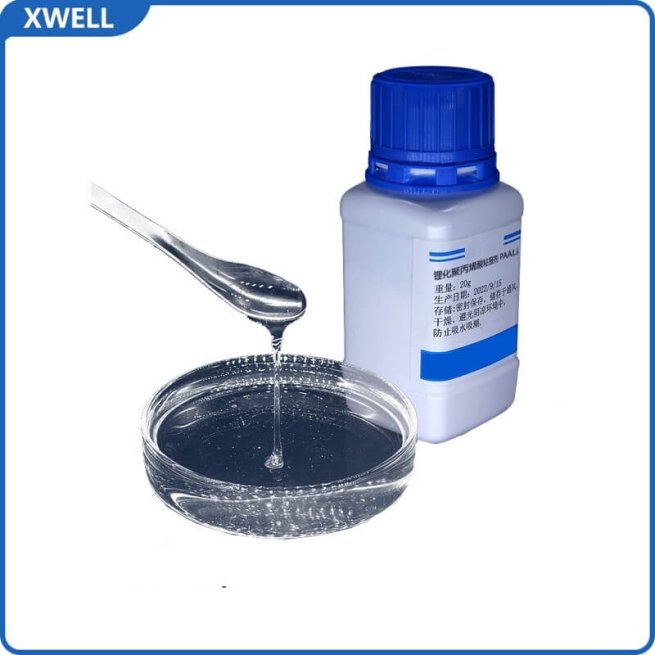Lithium Polyacrylic Acid Binder PAALi Silicon Carbon Negative Electrode
- Home
- Battery material
- Battery Cell Raw Material
- Lithium Polyacrylic Acid Binder PAALi Silicon Carbon Negative Electrode
Model:PAALi
Appearance:Colorless transparent liquid
Molecular Weight:~300,000
Solid Content:3.50–4.50%
Viscosity:2000–4000 mPa·s
pH Value: 7.0–9.0
Applications: Silicon-Carbon Anodes
Experimental Batteries: Compatible with coin cells & pouch cells.
MOQ: 1m
Leading time: 5-8 days
Lithium Polyacrylic Acid Binder PAALi Silicon Carbon Negative Electrode Silicon Oxide Bonding Experimental Battery
1. Product Overview
PAALi (Lithium Polyacrylate Binder) is a high-performance, water-based adhesive specifically designed for silicon-carbon anodes and silicon oxide (SiOx) electrodes in lithium-ion batteries. Produced by Kelude, this colorless, transparent liquid offers superior adhesion, electrochemical stability, and cycle performance, making it ideal for experimental and commercial battery applications.
2. Key Features
Excellent Adhesion: Strong bonding between electrode materials and current collectors.
High Polymer Strength: Withstands silicon anode volume expansion (up to 300%!).(MISSING)
Electrochemical Stability: Maintains performance over long charge/discharge cycles.
Water-Based & pH-Balanced: pH ~8 (neutral), no impact on initial Coulombic efficiency.
Ready-to-Use: Pre-lithiated, commercially mass-produced with consistent quality.
3. Technical Specifications
| Parameter | Specification | Test Result |
|---|---|---|
| Appearance | Colorless transparent liquid | Complies |
| Molecular Weight | ~300,000 | – |
| Solid Content | 3.50–4.50%! | 3.89%! |
| Viscosity | 2000–4000 mPa·s | 3200 mPa·s |
| pH Value | 7.0–9.0 | 8.1 |
4. Applications
- Silicon-Carbon Anodes: Enhances cycle life and mechanical integrity.
- Experimental Batteries: Compatible with coin cells & pouch cells.
- Commercial Production: Scalable for high-volume electrode manufacturing.
5. Usage Instructions
- Direct Use or Dilution: Can be applied as-is or diluted with deionized water.
- Mixing Process: Add to powder in reactor—high-speed stirring won’t break emulsion.
- Slurry Control: Adjust water content to achieve desired viscosity.
- Final Steps: Sieve, degas, and discharge slurry after dispersion.
- Storage: Sealed at room temperature (avoid extreme temperatures).
6. Why Choose PAALi?
Proven Performance: Widely adopted in silicon anode R&D.
Process Flexibility: Suitable for lab-scale and industrial production.
✔ Quality Assurance: Stable batch-to-batch consistency.

